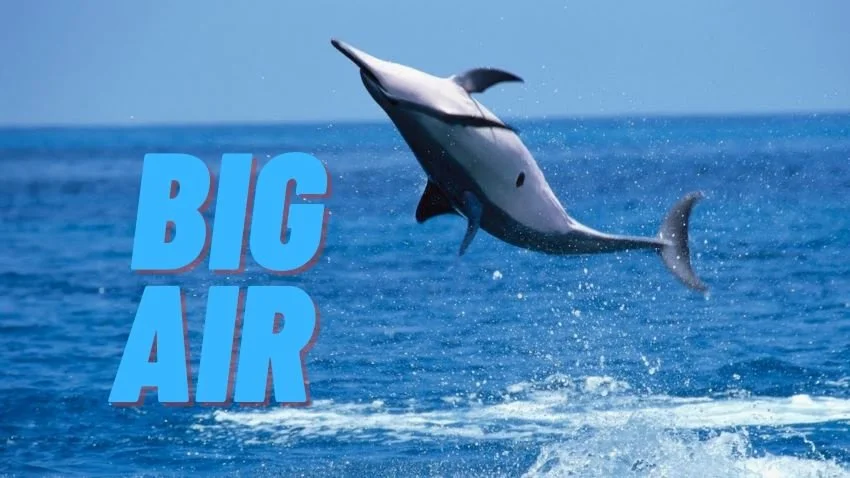Introduction to Spinner Dolphins
Even though they are not fish, despite George Costanza’s indications to the contrary, various marine mammals light up our fish-centric vacations. From Alaska to Guatemala and Panama (and even in the Brazilian Amazon), we’ve been awestruck by various dolphins, whales and porpoises.
While the pink dolphins of Brazil and the orcas off Alaska are particularly special, the various oceanic dolphins and porpoises are amazing – extra playful and a huge part of the fishing process in many places. Of the multiple varieties we’ve seen in the Gulf of Chiriqui, Panama, the Spinner Dolphins are the one that have captivated us the most. Here are a few facts about them:
Why do they call them “spinner” dolphins?
They are incredibly acrobatic, launching themselves out of the water and spinning up to seven times when they get vertical. Per National Geographic, “[t]he leaping and spinning likely serve several purposes, including the removal of irksome remoras, fish that latch on to eat parasites. Biologists also think the dolphins use their moves to communicate, each one signaling something different: ‘Let’s go’ or ‘Danger!’ or ‘I find you attractive.’”
Is there only one kind of spinner dolphins?
There are four named subspecies:
Eastern spinner dolphin (S. l. orientalis)
Central American or Costa Rican spinner dolphin (S. l. centroamericana)
Gray's or Hawaiian spinner dolphin (S. l. longirostris)
Dwarf spinner dolphin (S. l. roseiventris)
How big do they grow?
Spinner dolphins are relatively small compared to other types of dolphins. They don’t exceed 7 feet long and weigh less than approximately 180 pounds. Their coloration varies depending on geography.
Where do they live?
Eastern -- tropical eastern Pacific.
Central American or Costa Rican -- tropical eastern Pacific.
Gray's or Hawaiian -- from the central Pacific Ocean around Hawaii but represents a mixture of broadly similar subtypes found worldwide.
Dwarf -- first found in the Gulf of Thailand.
What do they eat?
While spinner dolphins are often seen around yellowfin tuna, they’re not typically feeding on the same baitfish that the tuna are eating. They typically dive several hundred feet to eat small fish, shrimp and squid.
What are the threats to them?
Because they travel closely with yellowfin tuna, spinner dolphins frequently ended up as bycatch for commercial longliners. In the 1960s, millions of them were killed this way. Thanks to conservation efforts, and various national and international statutes and agreements, that’s no longer the case, and indeed saving these mammals was a prime motivation behind the development of “Dolphin Safe” labeling on tuna products.
Why are they so important in the sportfishing process?
The presence of spinner dolphins is often a dead giveaway that there are yellowfin tuna nearby, as the schools often swim together. Historically, there were various hypotheses about why they did so – some speculated that the partnership helped both species find and eat prey, while others believed that their presence together protected both from other predators. The scientific consensus today is that “[o]ne or both species likely gain protection from predators (such as large sharks) by forming large, mixed-species groups.”
Merely reading about them can’t give you a full understanding of just how acrobatic these dolphins can be. Anything that can cause me to pause when I should be fishing has to be a wondrous part of nature. Here are some videos to whet your appetite (not literally):
National Geographic: Spinner Dolphins | Untamed Americas
Why Do Spinner Dolphins Spin?
Spinner Dolphins Captured by 'Spy Tuna'
Spinner Dolphins Chasing Bait and Yellowfin Tuna in Quepos, Costa Rica
Want to go to Panama and see them for yourself? Email us today and let’s get you there.







